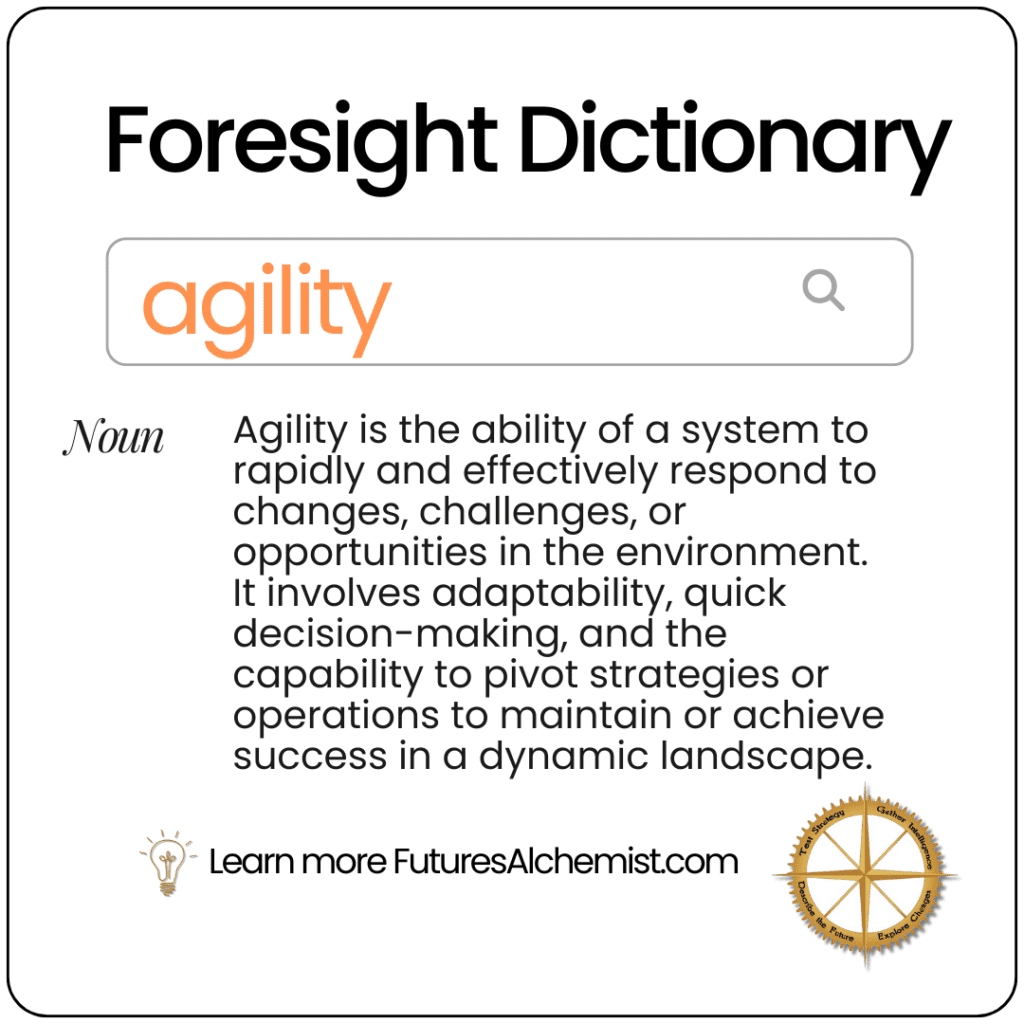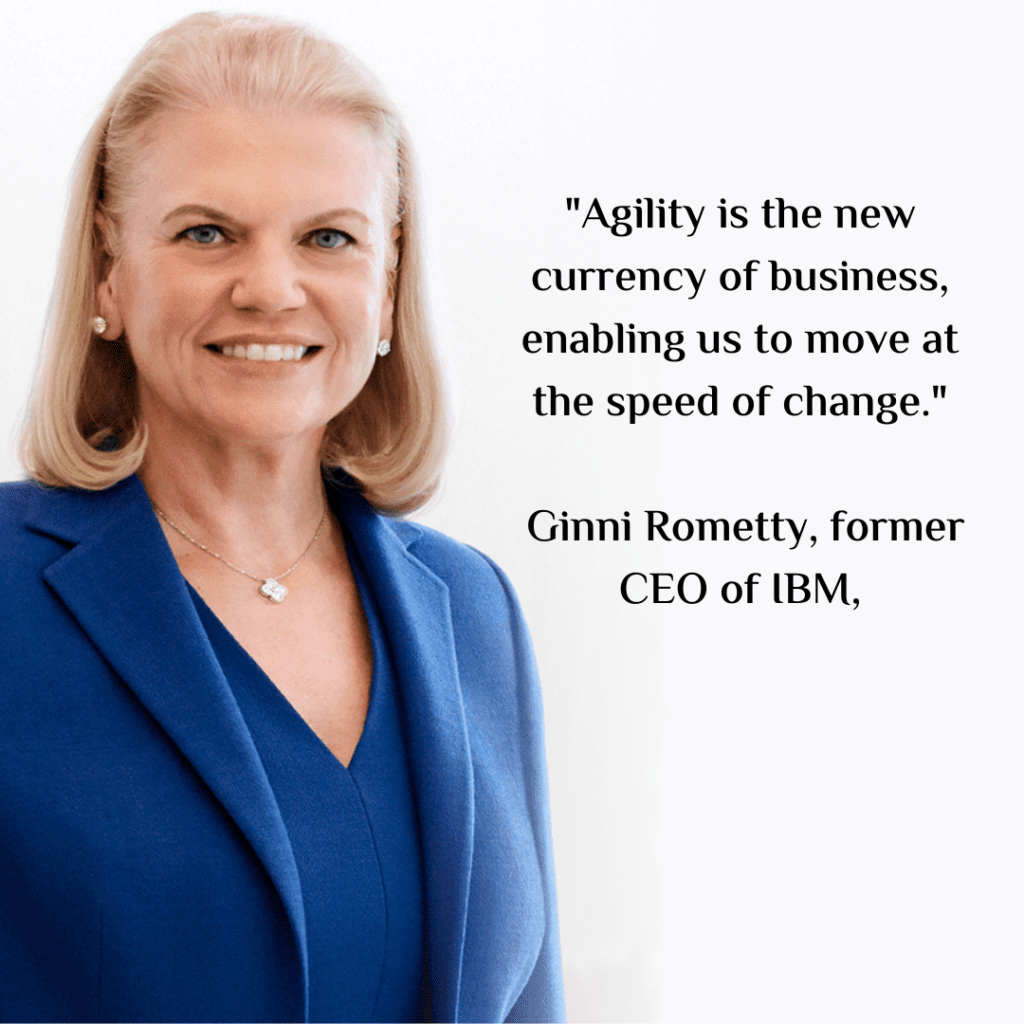

Definition
Agility in the context of futures thinking and foresight refers to the ability of an organisation, system, or individual to rapidly and effectively respond to changes, challenges, or opportunities in the environment. It involves adaptability, quick decision-making, and the capability to pivot strategies or operations to maintain or achieve success in a dynamic landscape.
Example
Covid 19 responses:
During the COVID-19 pandemic, many companies had to quickly shift to remote work. Tech companies like Microsoft and Zoom demonstrated agility by rapidly scaling their services to support a surge in remote communication. Microsoft Teams, for example, increased its daily users from 32 million in March 2020 to 75 million in April 2020, showcasing agility in scaling operations and meeting unexpected demand.
Ask yourself
- How quickly can we adapt to sudden changes or disruptions?
- How are we intentionally building our capacity to be agile?
- What mechanisms do we have in place to detect and respond to emerging trends or threats?
- Are our decision-making processes flexible enough to accommodate rapid changes in strategy?
- How can we build a culture that embraces agility and continuous learning?
Tools
- Scenario Planning: Helps organizations prepare for multiple potential futures, enhancing their ability to pivot strategies when necessary.
- SWOT Analysis: Identifying strengths, weaknesses, opportunities, and threats to assess how prepared an organization is to adapt to change.
- Design Thinking: A flexible problem-solving approach that encourages rapid iteration and user-centered solutions.
- Lean Startup Methodology: Emphasizes quick iteration, testing, and learning, helping organizations remain agile in uncertain environments.





